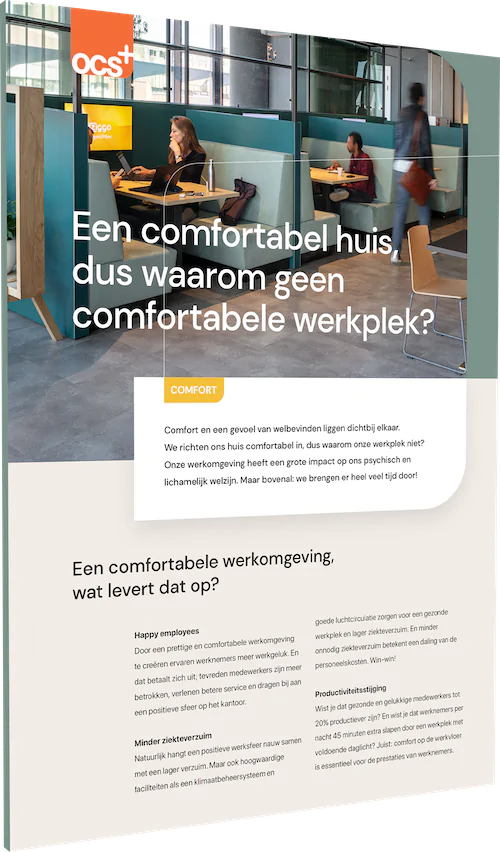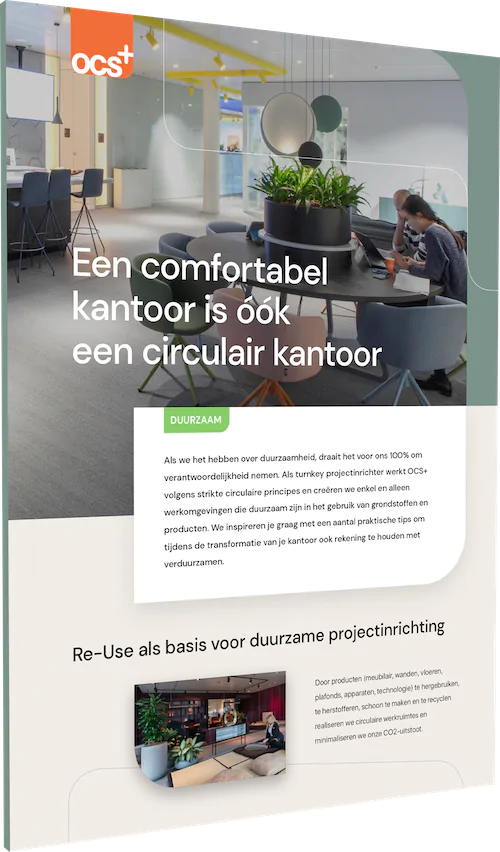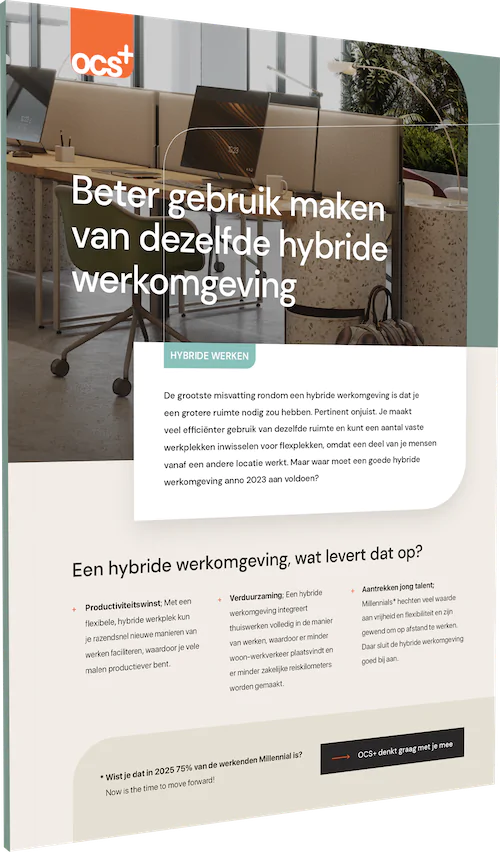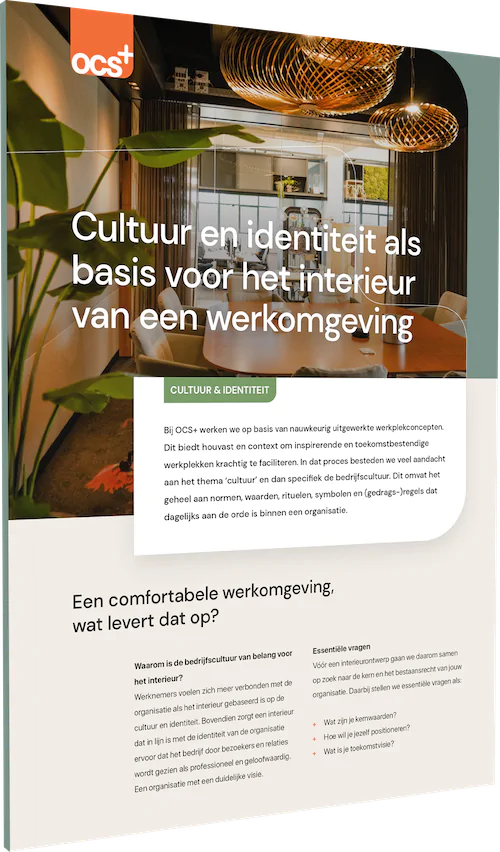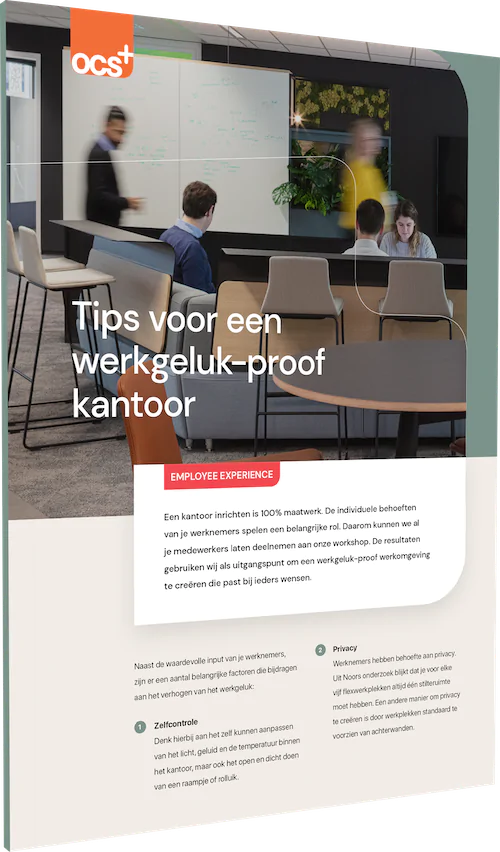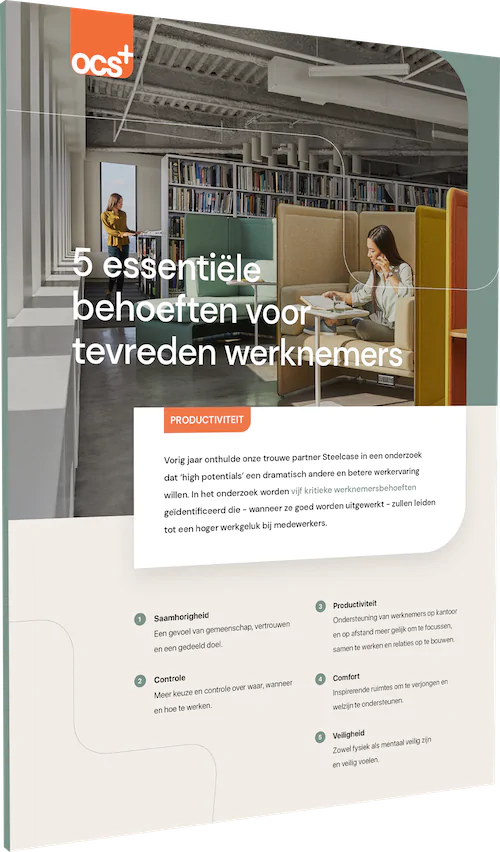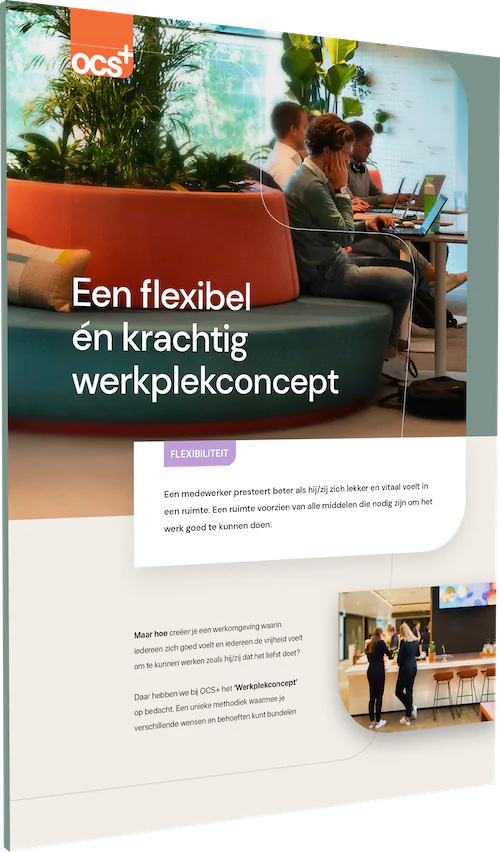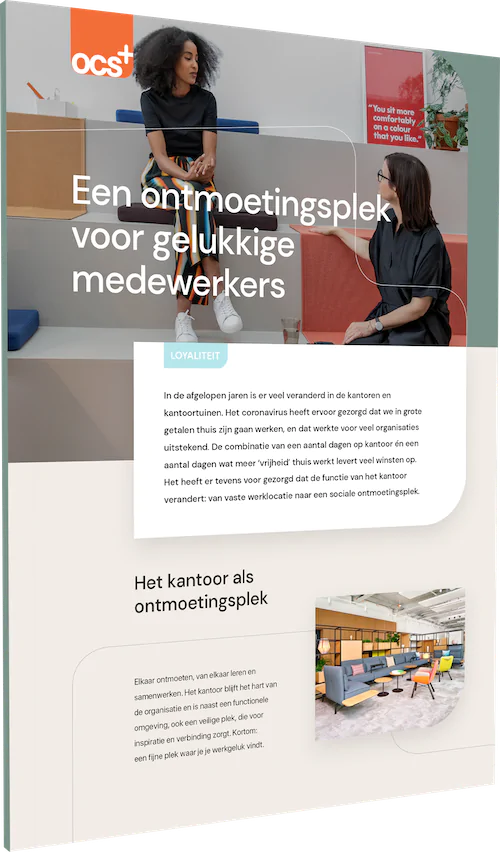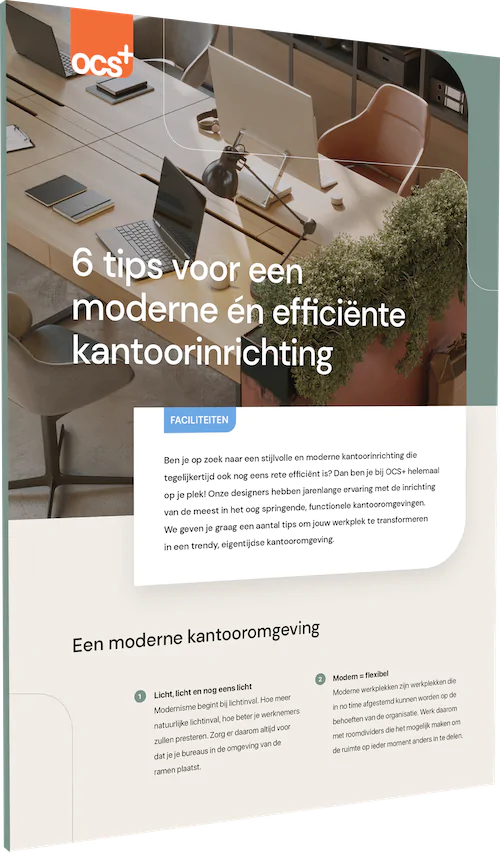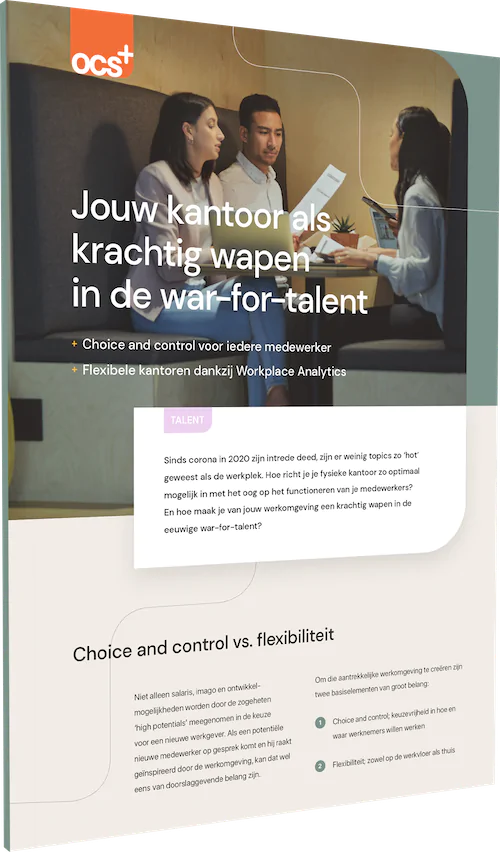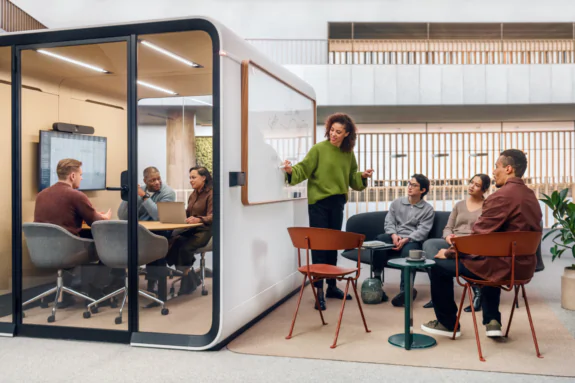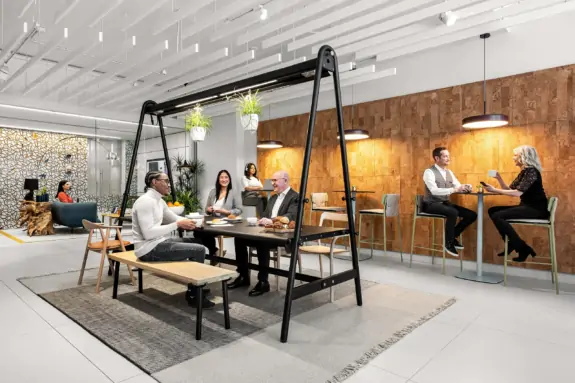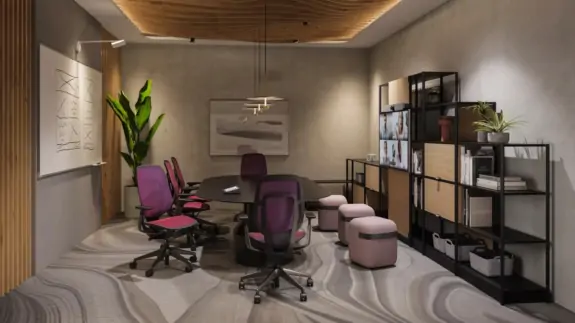Everything seems fine, right?
Yet, many employers would like to see their employees back in the office more often. Collaboration, interaction, but also personal contact and connection to the company are key reasons behind this.
The Office as a Meeting Place
In 9 out of 10 projects we take on at OCS+, this aspect—the office as a meeting place—plays a prominent role. In this article, we share some best practices that we provide to our clients when they want to encourage their people to come to the office more frequently.
Take advantage of this when you’re thinking about (re)designing your office or when your goal is to get your colleagues to come in more often.
1. Determine the purpose of your office
Your office is no longer just a workspace. Define the purpose and added value of being physically together. Is the office a meeting point, a place to brainstorm, or perhaps a space for focused work? Some companies, for example, set up special ‘creative spaces’ where employees can gather for brainstorming sessions, while others emphasize creating quiet spaces for deep focus.
2. Listen to your people
Talk to colleagues to understand their needs and preferences. Do they want sit-stand desks so they can move more naturally? Do they desire more structured social contact, like group sports activities? Or perhaps they need better balance between work and family life? By responding to these needs, you can create a workplace where everyone feels valued and heard.
Happy employees in the office lead to a better work atmosphere and higher productivity.
3. Consider hybrid working
Working from home also has various benefits: more focus on writing tasks, the freedom to let the painter in, or even doing a load of laundry or groceries in between meetings. Facilitate a mix of working from home and at the office. For example, schedule team meetings and important brainstorming sessions in the office, and plan focus tasks for work-from-home days.
4. Value autonomy and focus on results
Remote working gives employees autonomy. Yet, many managers still judge employees based on screen time and visibility rather than trusting them to deliver results. Discuss how autonomy can be preserved when more office work is expected. For instance, focus more on results and avoid making office attendance feel like a mandatory chore.
5. Provide the right setup
Create different areas and zones, each with its own purpose—from focus cabins to social coffee corners and zones where creativity can flow freely. Provide ergonomic sit-stand desks, comfortable chairs, and high-quality coffee and tea. A well-designed modern office environment can attract employees by offering them something they don’t have at home.
Make the choice to come to the office a conscious one
Happy employees in the office contribute to a better work atmosphere and higher productivity. So invest in a work environment that meets the modern needs of your staff. This may mean that the traditional open office makes way for a more diverse and flexible workspace.
Need help with this? Schedule an initial (non-committal) conversation with Workplace Consultant Sjef van Lieshoud. He’ll pinpoint the issues and provide you with valuable workplace insights that you can implement right away.
Want to learn more about the office as a meeting place?
Leave your details, and we will contact you by phone to schedule an introductory meeting.
Waar wil je meer over lezen?
Kies het thema waar je meer over wilt lezen en ontvang het e-book direct gratis in je mailbox.
